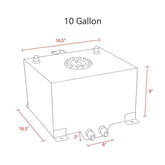The Importance of Regular Maintenance:
Proper maintenance and timely replacement of a vehicle's timing chain kit is crucial to engine performance and longevity. The timing chain connects the crankshaft to the camshafts and ensures the valves open and close at the proper times during the combustion cycle. Over time, the constant stress and friction causes the timing chain to stretch and wear. If the timing chain fails, it can lead to complete engine failure and major repair costs. That's why following the manufacturer's recommended replacement intervals for the timing chain kit is important.

Recommended Replacement Cycle:
For most modern vehicles, the timing chain and related components should be inspected around 90,000 to 100,000 miles and replaced between 100,000 to 120,000 miles. Some automakers also call for periodic adjustment of the chain tensioner and guides during routine maintenance. Missing these intervals risks a stretched or worn chain jumping timing, broken guide failure, and bent valves or piston contact.
The timing chain itself is a steel link chain that meshes with the crankshaft and camshaft sprockets. It's driven by the crankshaft and needs to maintain precision alignment to avoid jumping time. Related components in the timing chain kit include the chain tensioner, which keeps the chain taut, and guides, which prevent side-to-side movement. Both wear over time and can fail.
The plastic chain guides are subject to cracking and disintegration of the plastic teeth. This debris can clog oil passages. A loose or worn tensioner allows chain slack which exacerbates wear and the risk of skipping timing. The tensioner and guides should always be replaced along with the chain.

Cleaning for Longevity:
Ignoring leaks or noises from the timing chain area risks catastrophic engine damage if the chain breaks or jumps timing. Engine oil has detergent additives to disperse carbon deposits and should be changed regularly to avoid debris build-up which can accelerate component wear. Using the specified grade and weight of oil can also maximize the chain's durability.
Replacing the timing chain kit requires very careful disassembly to mark exact positions of the sprockets and proper realignment during reassembly. The complexity of the procedure and potential for disastrous mistakes is why most mechanics recommend replacing the water pump and seals during the same service.
While a timing chain and gear set up often lasts longer than a timing belt, it still requires periodic replacement to avoid premature failure. Following the vehicle manufacturer's advised intervals, listening for timing chain noises, and prompt replacement at any sign of wear are all inexpensive ways to avoid very costly engine repairs down the road. Performing regular maintenance and replacements on schedule is the best way to maximize the longevity of your vehicle's timing chain.










